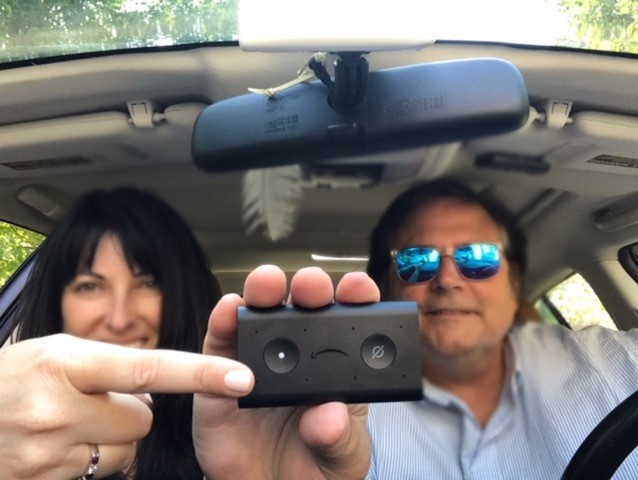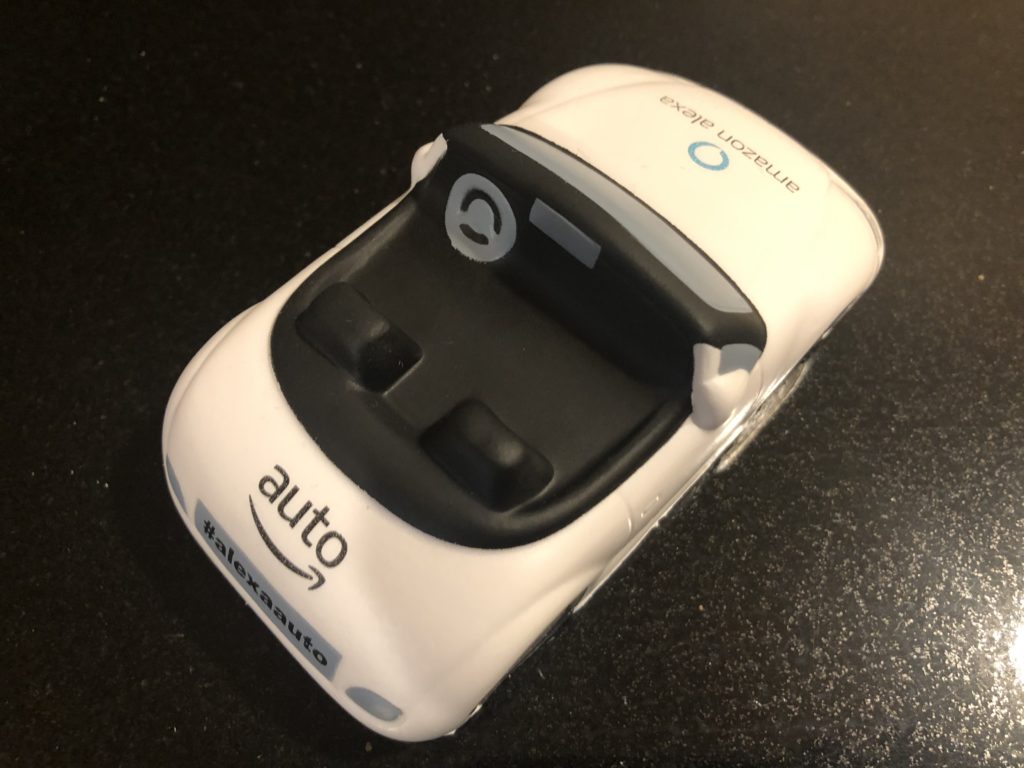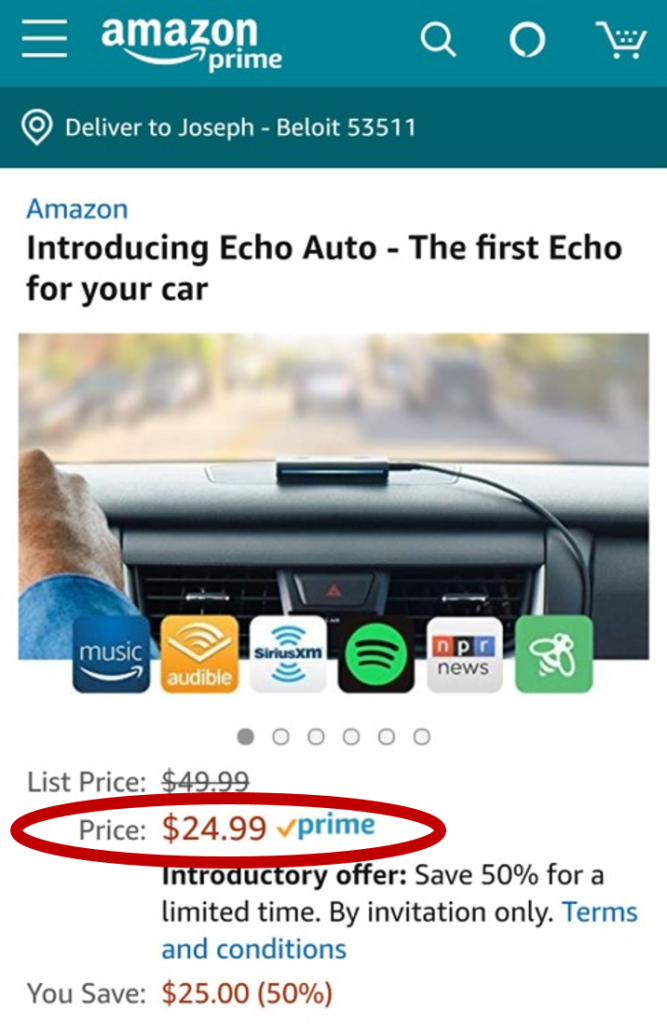
Like an invasion from Mars, they’re beginning to arrive…in droves.
No, not space aliens, computer viruses, or the “deep state” (whatever that is).
Amazon’s Echo Auto after-market devices are beginning to show up. We’ve blogged about these devices before, but in case you missed it, Amazon (like Google, and ostensibly Apple) is frantically trying mightily to ensure that “Alexese” is the most frequently spoken language in your car.
For the millions who already have purchased Echo devices of one kind or another for their homes, workplaces, or other locations, this new Echo Auto is a product that should be on the radar screens of radio broadcasters everywhere.
We talked to Amazon reps at CES this past January. Echo Auto was their big push at the show, and their booth in the North Hall with all the automakers in the vicinity signaled their seriousness about maintaining primacy in the “voice space” in people’s cars and trucks.
Notice I didn’t use the term “smart speaker.” While Techsurvey 2019 shows that nearly three in ten of our radio-oriented respondents already owns one (or more) of these devices (mostly made by Amazon and Google), the bigger trend here is voice command technology – the ability to simply speak and get a desired result.
While several car manufacturers are already embedding Amazon and Google voice technology into their new cars and trucks, what about the millions and millions of older vehicles on the road?
 That’s where Echo Auto comes into play. Gene and Julie (Gates) – that famous morning show many of you know and love – were the first to let me know their Echo Auto arrived in one those Amazon smiley boxes this past weekend. I have one on order, too, and I’m expecting it to show up any day.
That’s where Echo Auto comes into play. Gene and Julie (Gates) – that famous morning show many of you know and love – were the first to let me know their Echo Auto arrived in one those Amazon smiley boxes this past weekend. I have one on order, too, and I’m expecting it to show up any day.
And as of last January, Amazon had more than 1 million of these devices pre-ordered. And why not? Last time I checked, they were retailing for the low, low price of about $25 – a pittance to pay for the privilege of being able to boss Alexa around while you drive.
Echo Auto works via Bluetooth or an AUX IN jack, enabling its use in millions and millions of older vehicles.
We have long talked about the voice invasion in cars. While the car radio – or media screen – may still have buttons and presets for years to come, how long before consumers are shouting out orders to Alexa, rather than fumbling around on the dash? And given their obsession with safety and distracted driving, you have to believe the car makers will be actively embracing and promoting using voice rather than your fingers to get what you want while behind the wheel.
This has obvious implications on content usage, access, and discoverability, whether you’re a driver or a passenger. And yet, how many commercial and public radio stations don’t have their strategies together when it comes to voice? I hope all you Eagles, Bears, Mixes, and Edges are paying attention to how your radio station will be accessed in a world where voice in the car begins to dominate. Because it’s essential that whether it’s in kitchens, bedrooms, workbenches, cubicles – and now cars – consumers can simply use voice commands to listen to your radio station.
And then begs the question:
“What is your station’s audio strategy?”
That may seem counter-intuitive to a veteran of the Radio Wars. After all, radio is audio. But these days, it’s not only a valid question – it may be the core question as the world of in-car listening undergoes shifts.
Up until recently, your audio strategy was sounding louder than the other guy or ensuring your Voltair was working properly.
Thanks to voice, that strategic question takes on a whole new meaning, especially given the paramount importance of the car to radio. As the #1 listening location – now more than ever – this is a topic that should be on the agenda in every radio company’s programming meetings.
We’re tracking all these variables and questions in our three Techsurveys – for commercial, public, and Christian radio – providing context to the process as well as confidence about the mission ahead.
And we’re hoping you use that data to help shape your station’s relationship with Alexa, as well as the other voices that will soon be emanating out of car speakers.
Voice, like so many new platforms and technologies, presents yet another challenge to radio operators and owners. But it also provides an opportunity to be hard in new, different, cutting edge devices.
Including that 2009 Subaru sitting in your driveway.
- Like A Pair Of Old Jeans - April 2, 2025
- What’s Fair Is Fair - April 1, 2025
- What’s On Your Bucket List? - March 31, 2025




After using the Alexa for auto for a month, I’m not sure it shows more functionality than using Bluetooth and my phone’s general audio. That said, it’s more important than ever for stations to have a presence on iHeart and TuneIn for ease of use with voice-activated devices.
Appreciate the mini-review, Ann. And if, in fact, Alexa becomes the dominant language in cars (and other locations), it is essential radio stations have their streaming strategy together.
As I’ve not heard/read one – ONE – general manager/senior executive articulate an audio strategy with any degree of specificity, Fred, I’m asking you to come to the rescue.
What would need to be done for you to lay out a step-by-step “Here’s how others are doing it/What needs to be done” template for the great unwashed to get a handle on this?
Knowing what to do and how to do it, will open eyes, and prod a few to take action. Some will attempt to then do it themselves, and some will call on you and your good people to make it happen for them, while they keep focused on their current activities that bear their greatest yield.
The educated prospect is a more confident prospect, and one more likely to take action and become a client.
I’ll take that as a challenge, Andy. I’m going to be taking some time off rolling up to the July 4th holiday, but I will get with my team when I return and work on this. I think you’re right that it’s a crying need for radio. Keep in mind the goal posts are moving as Amazon, Google, and the others are making changes and upgrades to their platforms. Appreciate the comment.
My iPhone 7 already connects via Bluetooth in my 2009 Honda Accord. All I needed to add was a Bluetooth receiver (under $25) that I plugged into my AUX IN. I then use Siri to play anything I care to hear.
So, I don’t see who the Echo Auto offers something new that from what any streamer has already been doing in their older vehicles.
When the customer wants something, they will find a way to get it. Echo Auto or someway else.
Again, it shows the focus for radio broadcasters needs to be on what the listener wants.
Dick, true that. But here’s the thing – tech companies like Amazon, Google, Apple, etc. know that people become comfortable with voice command languages. You learn how to ask Alexa (or Siri or Google Voice or Cortana) a question in a certain way to ensure a proper response. Some people simply prefer Alexa to Siri – and vice-versa. And when you think about it, Apple’s initial edge with Siri seems to have been squandered as Amazon has moved into the space. While there are more iPhones than Amazon Echo devices out there, it become a comfort issue. If you love bossing Alexa around, Echo Auto is for you. Thanks for the note.